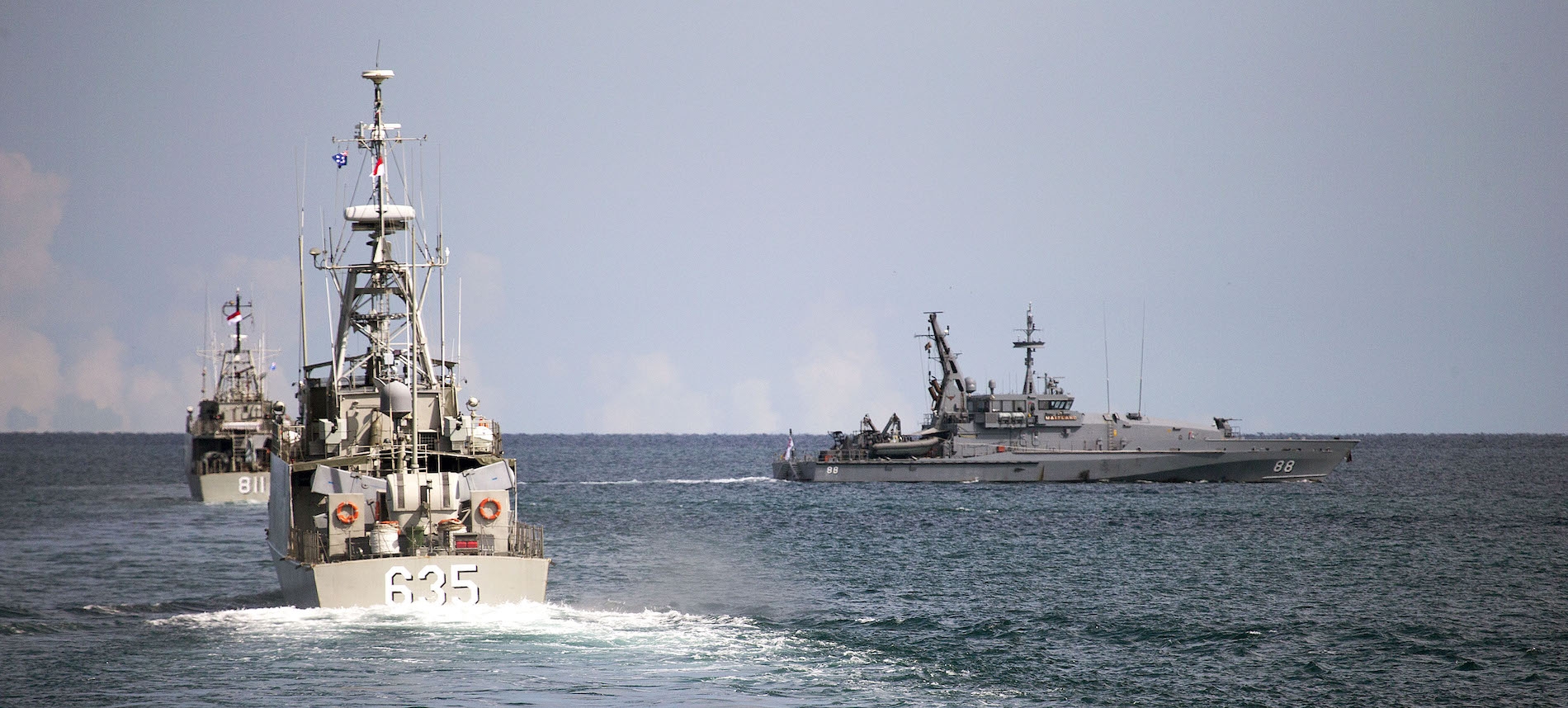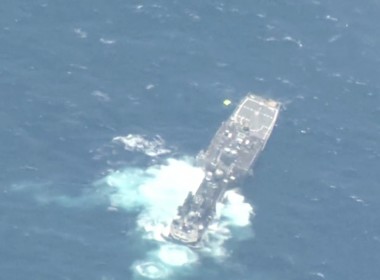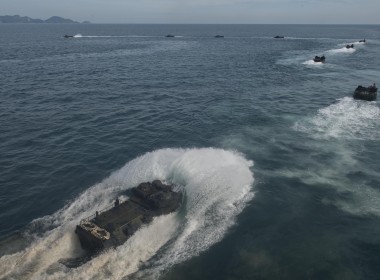OPINION | Reinforcing Indonesia–Australia defence relations: the case for maritime recalibration

Indonesia and Australia are increasingly important strategic anchors in the Indo-Pacific region, as recognised by the recently announced Indonesia–Australia Comprehensive Strategic Partnership. Yet historically, bilateral defence ties between the two countries have been volatile.
This Analysis makes the case for a maritime recalibration of Australia’s defence engagement activities with Indonesia to stabilise defence relations. The process of recalibrating defence relations, however, cannot proceed in a historical vacuum. The evolution of Australia’s Defence Cooperation Program (DCP) with Indonesia since the 1960s is examined in order to understand how the relationship could be recalibrated.
Three broad changes to DCP activities are recommended: reform existing DCP education and training programs to focus on joint maritime challenges; formulate long-term plans for the “conventional” modernisation of the TNI, including tri-service integration, maritime security operations, and defence industrial collaboration; and increase maritime-related exercises, both bilaterally and multilaterally, and consider joint TNI–ADF exercises built around challenges in the maritime domain.
Introduction
On August 30, 2018, a week after a new government was formed in Australia, Prime Minister Scott Morrison flew to Jakarta. It has become a tradition in Australian foreign policy in recent years to make Jakarta the first foreign destination for a new prime minister. This particular visit significantly boosted bilateral ties. As many had expected, Prime Minister Morrison and President Joko Widodo (Jokowi) announced that negotiations on a free trade agreement, the Indonesia–Australia Comprehensive Economic Partnership Agreement (IA–CEPA), had been successfully concluded and that the accord should be signed by the end of the year.
More importantly, both leaders also agreed to elevate bilateral ties to a Comprehensive Strategic Partnership (CSP). The elevated partnership would be based on five pillars:
- enhancing the economic and development partnership;
- connecting people;
- securing our and the region’s shared interests;
- maritime cooperation; and
- contributing to Indo-Pacific stability and prosperity.
This broad vision strengthens the bilateral relationship across different policy areas and actors and also boosts strategic stability in the Indo-Pacific — in other words, the bilateral partnership is also a regional partnership.
Yet, one of the central elements of the strategic partnership, the defence relationship, has historically been volatile. Indeed, relations between Indonesia’s armed forces (Tentara Nasional Indonesia or TNI) and the Australian Defence Force (ADF) have sparked wider bilateral crises and fallen victim to broader political controversies in the past. After the improvement in defence cooperation following the 2006 Lombok Treaty, for example, Jakarta suspended defence relations in 2013 following revelations that Australia’s intelligence apparatus had intercepted communications among members of President Yudhoyono’s closest circle.
The relationship was restored in August 2014 after both countries signed a Joint Understanding on a Code of Conduct, with each side agreeing that its intelligence activities would not harm the interests of the other. However, by December 2016 there was yet another disruption to the relationship between the TNI and the ADF. TNI Commander Gatot Nurmantyo suspended discussions for future language-training activities after a TNI officer complained about some teaching materials at the Campbell Barracks in Perth. Cooperation was restored when President Jokowi visited Australia in February 2017.
A successful and sustainable implementation of the new CSP will require the stabilisation of bilateral defence ties. This analysis argues that the relationship between the TNI and the ADF should be reoriented towards a shared maritime vision. A maritime focus is a strategic necessity, given the shared regional challenges in the maritime domain, from piracy and illegal, unregulated and unreported fishing, to maritime disputes such as the South China Sea. It is also opportune, as President Jokowi has developed Indonesia’s maritime outlook through his Global Maritime Fulcrum (GMF) doctrine and National Sea Policy. Lastly, a maritime focus could help recast one of the entrenched geostrategic viewpoints in the Australian strategic community, that threats to Australia will come “from or through” Indonesia.
A maritime-based defence relationship should be complemented by a recalibration of TNI–ADF cooperation activities. Such realignment, however, cannot be proposed in a policy vacuum. This analysis explains the persistence of a “sawtooth trajectory” in bilateral defence relations — short periods of rapid development followed by sharp and painful reversals. The over-politicisation of defence relations — subordinating defence-specific functional goals to bilateral or domestic political ones — helps explain this pattern. It also looks at Australia’s evolving defence cooperative engagements with Indonesia, from defence materiel to education and training. The resulting analysis and findings could help develop specific areas of maritime recalibration in defence engagement.
This paper’s emphasis on TNI–ADF relations departs from conventional analyses of Indonesia–Australia security relations, many of which are built around broader bilateral challenges, from political and economic to sociocultural. The decision to focus on TNI–ADF relations is not to deny the importance of these issues. However, given how powerfully defence-related events have shaped the Australia–Indonesia relationship, TNI–ADF relations will almost always feature prominently in bilateral engagements.
Evolving security perceptions and the quest for shared interests
Since the events surrounding Timor Leste’s independence in 1999, the relationship between Indonesia and Australia has gradually improved. The 2005 Joint Declaration on Comprehensive Partnership and the 2006 Lombok Treaty provided the foundations for the post-Timor Indonesia–Australia relationship. In 2010, both countries agreed to negotiate a free trade agreement. In February 2017, then Foreign Minister Julie Bishop and Foreign Minister Retno Marsudi signed the Joint Declaration on Maritime Cooperation and by March 2018, both countries signed the Maritime Cooperation Plan of Action.
In August 2018, the IA-CEPA was concluded. These documents did not, of course, emerge in a vacuum. They were built around intensified government-to-government relations over the past decade. While these sectoral agreements solidified the relationship, the new CSP provides a larger strategic framework. In fact, it positioned Australia on the same level as the United States and China, the two countries Indonesia has had a comprehensive strategic partnership with since 2013 and 2015, respectively.
However, the new CSP does not automatically erase the past, even if it provides a signpost to the future. As one of the key elements in the broader bilateral dynamic, the TNI–ADF relationship in particular has been historically volatile. It has swung from one extreme to the other since the 1990s. Even the increasingly solid foundation provided by the Lombok Treaty and the 2012 Defence Cooperation Arrangement (updated in February 2018) could not fully safeguard the relationship from crises, as noted above. In fact, both countries have traditionally viewed each other with a mix of ambivalence and fear. Nonetheless, policymakers and analysts have always encouraged Indonesia and Australia to cooperate based on shared interests regardless of differences since the Cold War.
During the Cold War, however, this narrative of cooperating regardless of differences was never fully defined in the official policy discourse. The 1976 Australian Defence White Paper implied that both countries shared “basic strategic interests” but these were not explained. By 1987, Indonesia was said to be of great strategic significance to Australia as it, “cover[s] the majority of the northern archipelagic chain, which is the most likely route through which any major assault could be launched against Australia, [and] it also lies across important air and sea routes to Europe and the North Pacific.”
Australia saw Indonesia’s geographic proximity as a source of threats that could come “from or through” Indonesia, thus posing risks to Australia’s security. Under such conceptions, Indonesia might threaten Australia’s security interests in the Torres Strait and Papua New Guinea, for example, or provide a launching pad for hostile powers to the north seeking to attack Australia. Parts of this narrative survived the Cold War, with fear and ambivalence gradually becoming a constitutive element of Australia’s relations with Indonesia in much the same way that trust is an enduring feature of Australia’s relations with the United States.
After the Lombok Treaty, specific discussions of shared interests became less prominent. The 2009 White Paper used “shared interests” in reference to China but still considered Indonesia a possible strategic liability if its internal stability deteriorated. The 2013 White Paper mentioned “significant shared interests” without elaboration but added that, “a shared aspiration for the stability and economic prosperity of our region … underpins our partnership and is driving increased breadth and depth in our defence cooperation”.







